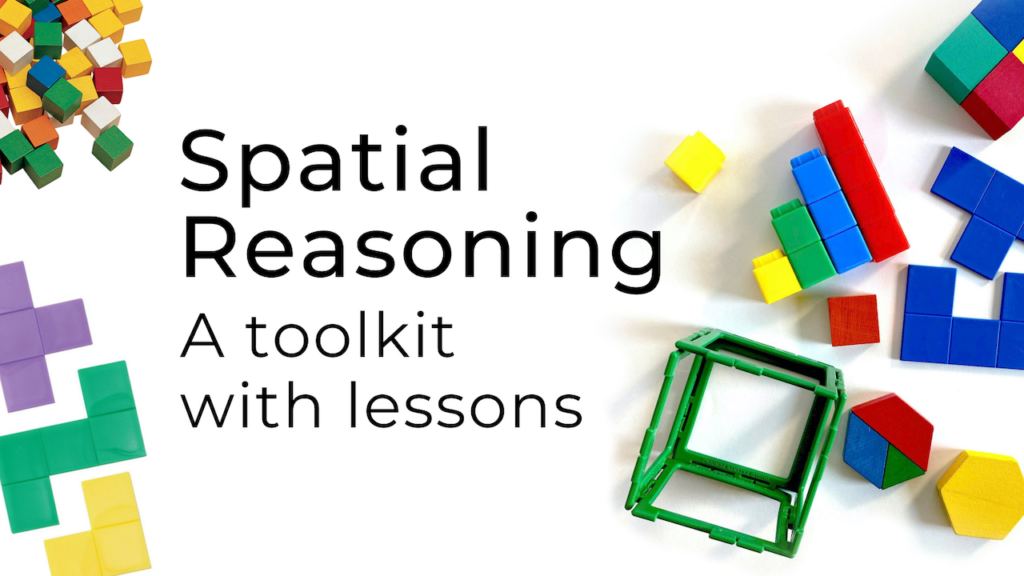Shape Slicer
Early Years/Primary (Age 4 – 8)
Curriculum Goal
Kindergarten: Demonstrating Literacy and Mathematics Behaviour
- Describe, sort, classify, build, and compare two-dimensional shapes and three-dimensional figures, and describe the location and movement of objects, through investigation
Primary: Spatial Sense
- Describe the relative positions of several objects and the movements needed to get from one object to another
- Compose and decompose two-dimensional shapes and show that the area of a shape remains constant regardless of how its parts are rearranged
- Construct and describe two-dimensional shapes that have matching halves
Context
- This is a teacher-led activity that can be conducted in small groups or as an entire class.
- Students should be familiar with patterning blocks and have some previous experience with creating and decomposing shapes.
- This short activity can be conducted prior to a lesson (such as Hexagon Card Game or Can You Draw This?) and repeated over time as an assessment tool.
Materials
- Computer and projector
- Shape Slicer handout (Appendix A)
- Shape Slicer Slide Deck with presenter notes (Appendix B)
- Pattern blocks
- Two trapezoids, five squares, six triangles, one hexagon, two rhombuses
- Pen or pencil
Lesson
- Distribute a variety of pattern blocks to each student.
- It is encouraged that students conduct this activity in their minds and communicate their solution using spatial language. Alternatively, students may be provided the Shape Slicer handout (Appendix A) to aid in the completion of this activity.
- Inform students you will be showing them an image and they must identify how to create the image using a variety of shapes.
- Show Image 1A from the Shape Slicer Slide Deck (Appendix B).
- Invite students to recreate this shape first using pattern blocks. Ask whether there are different ways of making the same shape. If necessary, students may use the printout to slice the shape using their pen or pencil.
- When students have sliced the shape into smaller shapes, progress the slide deck to the next slide: “Image 1B”.
- Students can compare the displayed solution to their own. It should be noted that their answer may be correct, even if it does not match the example on the slide.
- Have students find the minimum number of pattern blocks to transform Shape A to Shape B each time.
- Facilitate and encourage group discussions regarding the students’ strategies for how they went about solving the problem. The following are some examples of questions to extend student thinking:
- How many pattern blocks were used in this image? How many different kinds?
- How did you create your new shape?
- Is there another way to slice this shape? Which way is easier?
- Was the slice symmetrical?
- Is it easier to construct shapes or decompose shapes?
- Repeat the process with each shape in the slide deck. As the activity progresses, the level of difficulty, possible slice combinations, and the number of slices required to complete each challenge increases.
- Please note beyond Image 8, the shapes do not use traditional pattern blocks. Advise students that they no longer to need to use pattern blocks to create the original shape.
Look Fors
- Can the student accurately split the shape into smaller parts that resemble and use the patterning blocks?
- What kinds of strategies did students use to split the shape?
- Are students able to split the same shape up in more than one way?
- Are students using correct geometric and spatial language?
- Can students describe or retell how they deconstructed the original shape?
- Can students communicate how they are visualizing the slices in their mind? Are they relying on their knowledge of pattern blocks?
Extension
- Have students challenge each other by creating their own shapes.
- Individually, students will create a shape using pattern blocks and trace the outline on paper.
- Students will exchange their “unsliced” shapes with a partner.
- Partners will try to slice the shape into the pattern blocks that create the shape. Have students compare the original to the sliced shape. The creators of the shape can guide slicers to the answer using spatial language.
- Start the process again but this time swap the roles.
Share this lesson
Share on facebook
Share on twitter
Share on email

